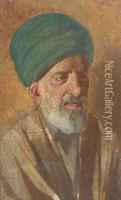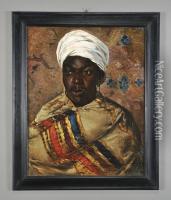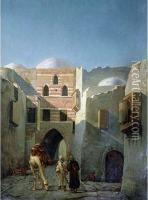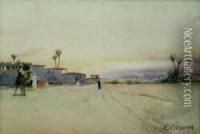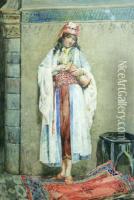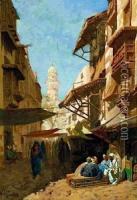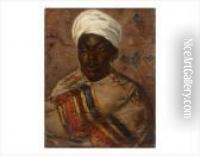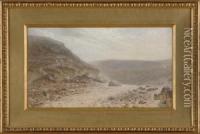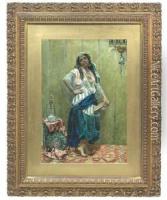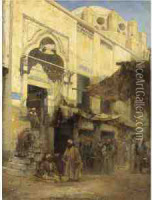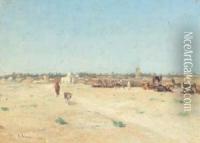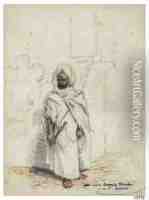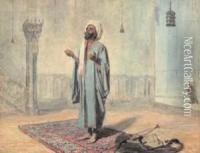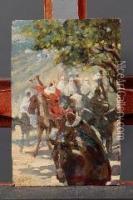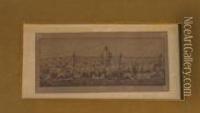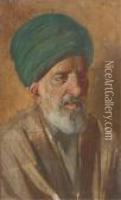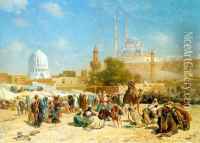Cesare Biseo Paintings
Cesare Biseo was an Italian painter known for his orientalist and historical scenes. Born in Rome on May 4, 1843, Biseo developed an interest in art at a young age. His initial training was at the Accademia di San Luca in Rome, where he was influenced by the academic and classical traditions of the time.
Biseo's work is characterized by a fascination with the East, which was a popular theme among European artists in the 19th century. This movement, known as Orientalism, was marked by the depiction of Eastern cultures as exotic, opulent, and mysterious. Biseo's travels to the Middle East and North Africa, particularly Egypt and Morocco, had a profound impact on his subject matter and style.
His paintings often portrayed daily life in these regions with vivid detail and rich color, capturing the imagination of his European audience. Biseo was also known for his historical genre scenes, which were meticulously researched and executed with a narrative flair that engaged viewers.
Throughout his career, Cesare Biseo exhibited his works in various Italian cities and received accolades for his contributions to Italian art. His paintings can be found in private collections and museums, and they continue to be studied by those interested in the Orientalist movement and 19th-century Italian art.
Cesare Biseo passed away on January 24, 1909, in Rome. His legacy lives on through his evocative paintings, which remain a testament to his skill as an artist and his cultural curiosity about the world beyond his native Italy.
